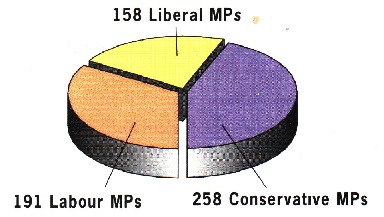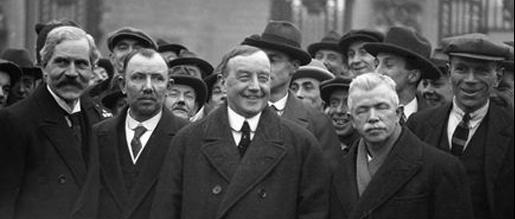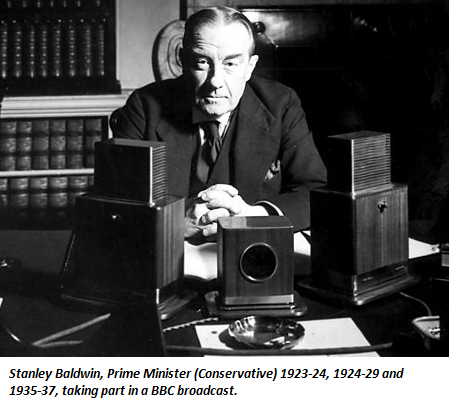
Britain in the 1920s

Introduction
A Land Fit for Heroes
After 1918, the soldiers came back from the war. Lloyd George, the British Prime Minister, said they deserved 'a land fit for heroes to live in'. In the same year, for the first time in British history, women over 30 were allowed to vote.
There was a boom in industry. People rushed out to buy the things they hadn't been able to buy during the war. Factory workers worked overtime. They were paid more money. This meant that they could buy even more.
Soon, however, the boom ended. Unemployment grew. There was trouble in the coal industry in 1921, when the mine-owners cut wages. The miners went on strike After a month, they were defeated.
The First Labour Government
 In January 1924, a Labour government took power in Britain for the first
time. Ramsay McrcDonald became Prime Minister. The new
government helped local councils build council houses. It increased
old age pensions and dole money. It said that all children must be
given secondary education.
In January 1924, a Labour government took power in Britain for the first
time. Ramsay McrcDonald became Prime Minister. The new
government helped local councils build council houses. It increased
old age pensions and dole money. It said that all children must be
given secondary education.
The Labour government of 1924 was a 'minority' government. It did not have a majority of MPs in the House of Commons. It ruled only with the support of the Liberal Party.
When after just nine months the Liberals voted against Labour, the government was forced to resign.
 Ramsay MacDonald with his Labour ministers – left to right: J H Thomas, Arthur Henderson and J R Clynes. Clynes remembered how strange it felt when
"MacDonald the clerk , Thomas the engine-driver, Henderson the labourer and Clynes the mill-hand" went to meet George V. Some workers distrusted the Labour government. One shipyard worker did not like the new Labour ministers wearing smart suits and top hats: 'It's a lum [tall] hat government like all the rest' he shouted.
Ramsay MacDonald with his Labour ministers – left to right: J H Thomas, Arthur Henderson and J R Clynes. Clynes remembered how strange it felt when
"MacDonald the clerk , Thomas the engine-driver, Henderson the labourer and Clynes the mill-hand" went to meet George V. Some workers distrusted the Labour government. One shipyard worker did not like the new Labour ministers wearing smart suits and top hats: 'It's a lum [tall] hat government like all the rest' he shouted.
The General Strike
 Trouble in the coal industry continued. In 1925, the mine-owners proposed another cut in the miners' wages. They also wanted to increase the hours the miners worked. The miners' leader, Herbert Smith, gave the miners' reply: 'Nowt doin', he said.
Trouble in the coal industry continued. In 1925, the mine-owners proposed another cut in the miners' wages. They also wanted to increase the hours the miners worked. The miners' leader, Herbert Smith, gave the miners' reply: 'Nowt doin', he said.
This time, however, the miners were supported by workers in the transport, printing, iron and steel, chemicals, electricity and gas industries. If it came to a strike, it would be a General Strike.
The miners took up the slogan, 'Not a minute on the day, not a penny off the pay'. The mine-owners continued to demand a cut in wages and an increase in the hours of work. On Monday, 3 May 1926, the Trades Union Congress (TUC) called a General Strike.
The Strike lasted nine days, but on 12 May 1926 – with their money for strike pay running out, and fearing the Strike was heading towards revolution – the leaders of the TUC called it off.
In 1927, the Trades Disputes Act made general strikes illegal. The strike of 1926 was the first General Strike in Britain, and it was the last.
After you have studied this webpage, answer the question sheet by clicking on the 'Time to Work' icon at the top of the page